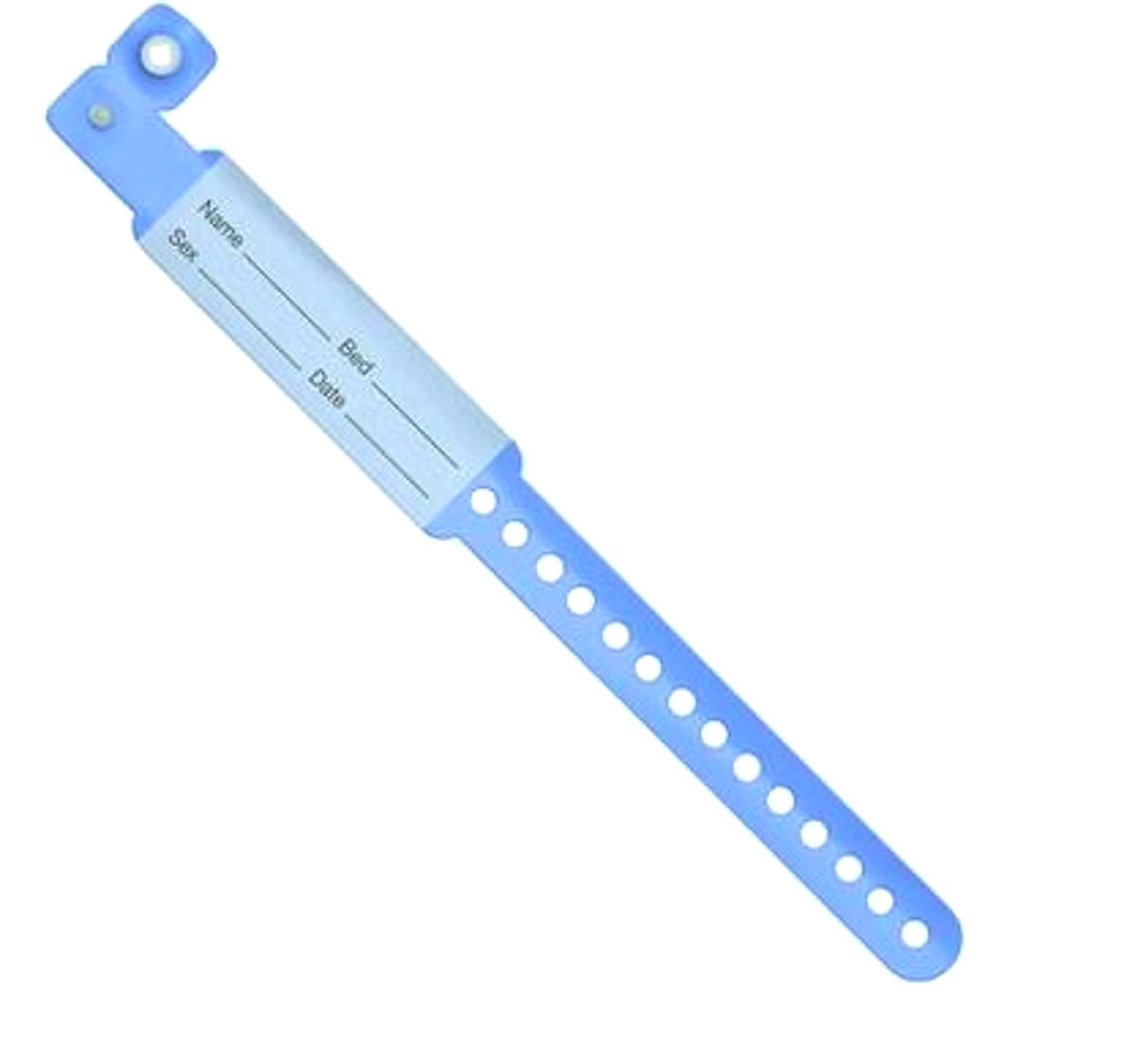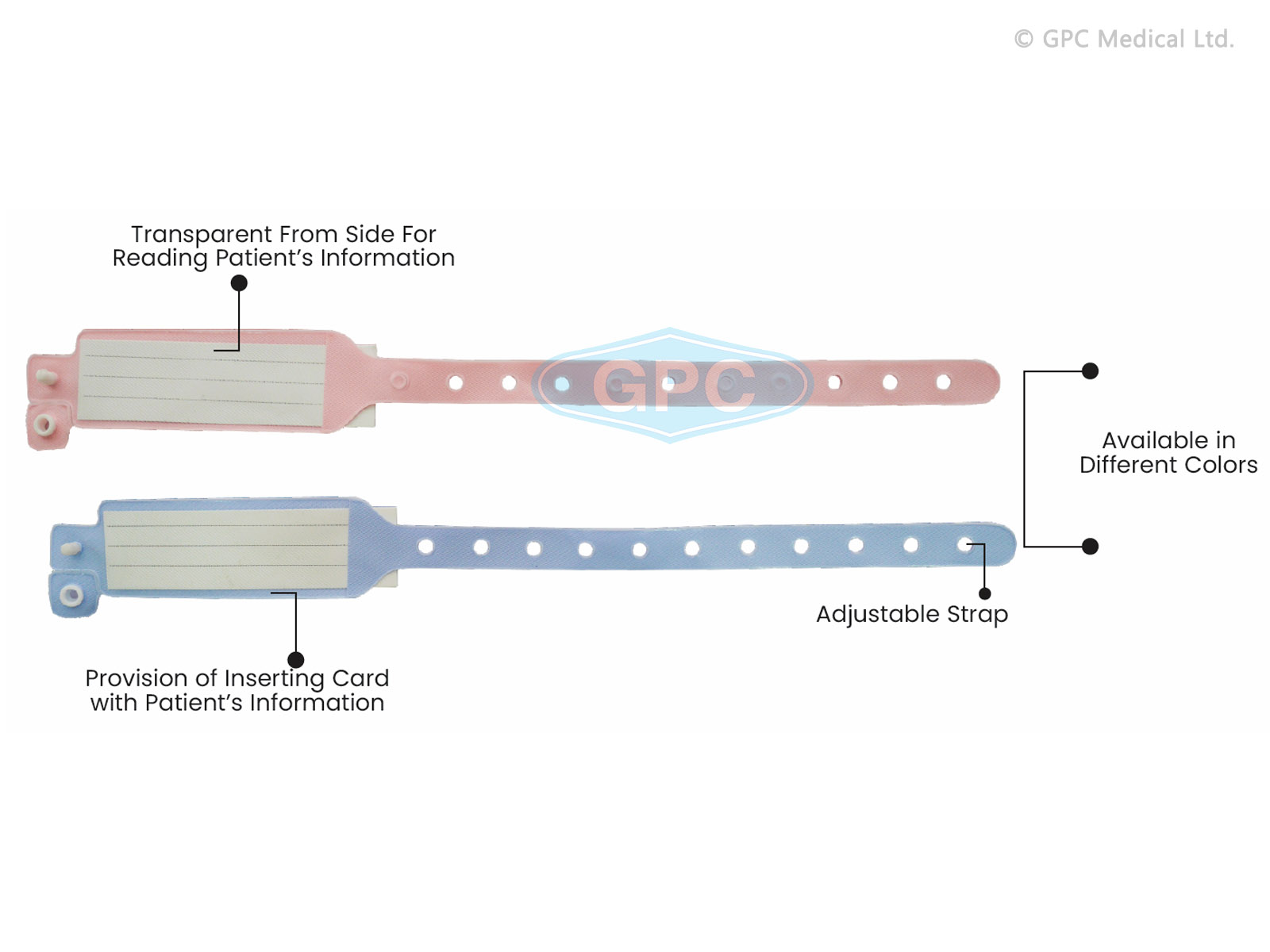Discovering the Various Kinds Of Patient Identification Band Made Use Of in Medical Facilities
In the elaborate globe of healthcare, the critical duty of Patient Identification bands often goes undetected. These bands, differing from simple paper wristbands to sophisticated RFID bands, create the backbone of Patient security protocols, making certain accuracy in Patient Identification.
Comprehending the Value of Patient Identification Bands
While they might look like mere devices, Patient Identification bands play a vital function in clinical facilities. These bands function as a vital device for confirming Patient identification, preventing medical mistakes connected to misidentification. The bands normally show important details such as the Patient's name, age, blood group, and any type of known allergies. They enable medical care experts to rapidly access this vital information, therefore helping with precise and timely medical treatment. Patient Identification bands likewise aid in improving administrative tasks, ensuring precise record-keeping and invoicing. Regardless of their simpleness, these bands personify the concept of Patient safety and security, a keystone of high quality wellness treatment. Without them, the risk of medical errors, and as a result, Patient harm, could dramatically increase.
Conventional Paper Wristbands: Their Use and Limitations
Conventional paper wristbands have been a staple in Patient Identification throughout different medical centers. While their usage is extensive, they harbor certain restrictions that may affect their efficiency in Patient monitoring. This area will concentrate on the range of their application and the inherent drawbacks connected with their usage.
Paper Wristbands: Usage Extent
In the realm of Patient Identification, paper wristbands have actually long held an important role. These bands are usually used in outpatient setups, where the Patient's keep is short-term. The wristbands have vital information such as the Patient's name, day of birth, and an one-of-a-kind Identification number. This straightforward, yet effective system, enables clinical professionals to promptly and properly identify clients, making certain the right treatment is carried out. Paper wristbands are also used in emergency circumstances, where fast Identification is paramount. Their usage includes events like blood contribution drives and mass inoculation programs, better emphasizing their versatility. Despite advancements in innovation, the humble paper wristband continues to be a dependable and affordable solution for Patient Identification in different health care circumstances.
Limitations of Paper Wristbands
In spite of their widespread usage, paper wristbands are not without their disadvantages. In enhancement, paper wristbands often do not have the technological abilities of even more modern-day choices, such as barcoding or RFID chips, restricting their performance to simply showing written info. Paper wristbands can trigger discomfort or skin irritability to some clients, especially when worn for extended periods.
Barcoded Wristbands: Improvements in Patient Identification
While Patient Identification has actually long been a crucial aspect of medical care, the development of barcoded wristbands indicates a considerable leap onward. These bands leverage the simpleness of barcoding technology, enabling for Patient information to be rapidly checked and accessed. They improve the rate and accuracy of Patient Identification, lowering the threat of medical errors connected to misidentification.
Radio Frequency Identification (RFID) Bands: an Action In The Direction Of Futuristic Healthcare
The development of Patient Identification bands has actually produced the development of Superhigh frequency Identification (RFID) Bands (patient identification band). These ingenious devices present key benefits for medical care centers, providing a more reliable and technically advanced means of Patient Identification. The implementation of RFID in medical care is a substantial step towards an extra advanced method to Patient management and security
Understanding RFID Bands

RFID Bands: Trick Benefits
Largely, these bands improve Patient security by giving accurate, instant Identification, consequently lowering medical errors. RFID bands can keep a huge quantity of Patient information, including medical history and allergies, allowing customized treatment. On the whole, RFID bands stand for a significant advancement in Patient Identification technology, benefiting both clients and health care carriers.
Implementing RFID in Healthcare
These bands provide a smooth means to track and recognize individuals, ensuring their safety and enhancing efficiency in therapy procedures. RFID bands reduce try this site medical mistakes by providing precise Patient Identification, which is important in stopping misdiagnosis or incorrect medication management. Thus, the implementation of RFID bands is a considerable action towards boosting Patient safety and health care delivery.

Color-Coded Wristbands: Helping in Quick and Accurate Diagnosis
In the bustling environment of a clinical facility, color-coded wristbands have become essential devices for swift and accurate Identification of a person's clinical condition. These wristbands, put on by individuals, bring particular shades that represent different medical problems or conditions. For example, red could suggest allergy threats, while yellow may represent a loss danger. This system is designed to offer instant visual hints to health care companies, boosting Patient safety and care top quality. In emergency scenarios, making use of these wristbands permits rapid decision-making. The efficiency of color-coded wristbands depends on the harmony of color analysis throughout health care institutions, calling for usual requirements for consistent application.
Techniques for Reliable Application and Monitoring of Patient ID Bands
Accomplishing optimal usage of Patient Identification bands requires a well-structured strategy for their application and administration. Patient education and learning is also essential; people need to understand the function of the bands and the need for their continuous wear. It's important to have a back-up plan in location, such as barcode scanning or biometrics, to ensure that Patient Identification is never jeopardized.
Conclusion
Patient Identification find here bands are vital in clinical centers to make certain safety and accuracy. Efficient application and monitoring of these bands can significantly decrease medical errors, improve performance, and improve overall Patient care.
These bands, varying from basic paper wristbands to innovative RFID bands, create the foundation of Patient safety and security protocols, guaranteeing precision in Patient Identification.The development of Patient Identification bands has brought about the introduction of Radio Regularity Identification (RFID) Bands. On the whole, RFID bands stand for a substantial improvement in Patient Identification innovation, profiting both patients and health care carriers.
RFID bands minimize clinical errors by offering precise Patient Identification, which is important in protecting against misdiagnosis or incorrect medication administration. Patient education is also critical; clients need to understand the objective of the bands and the need visit our website for their continuous wear.